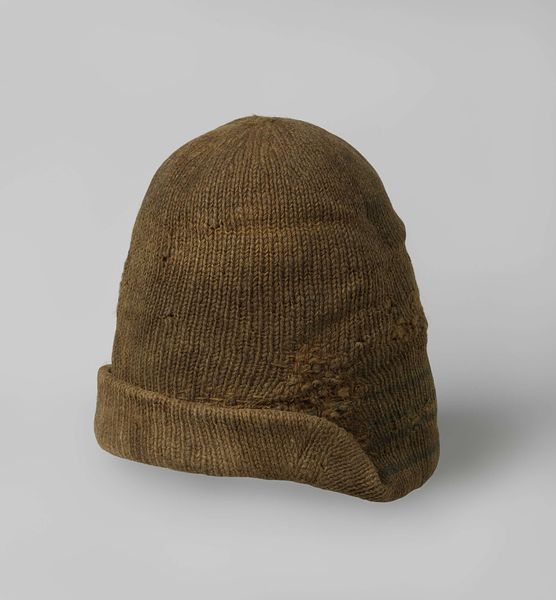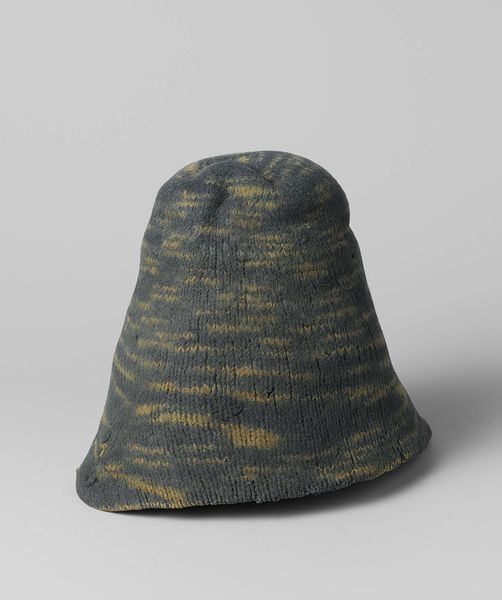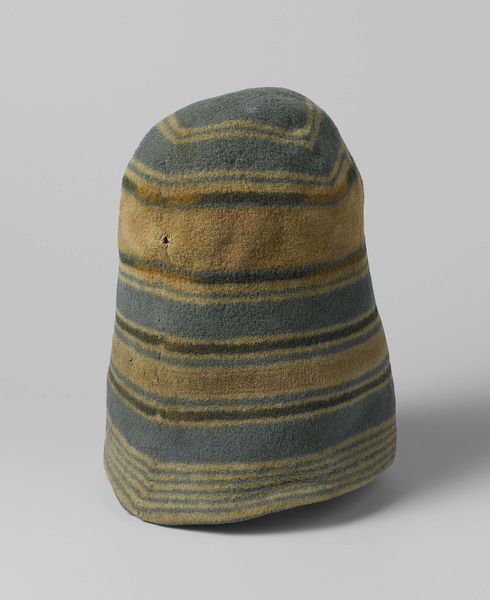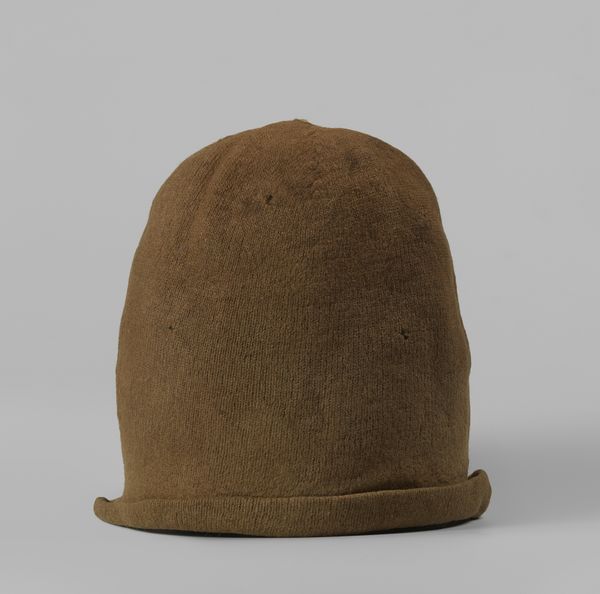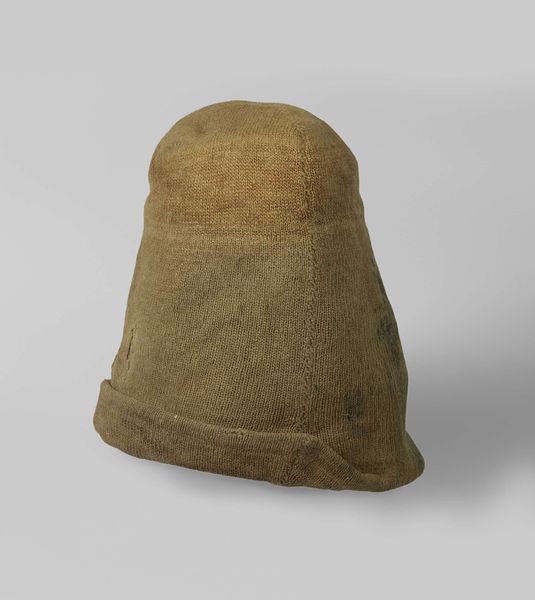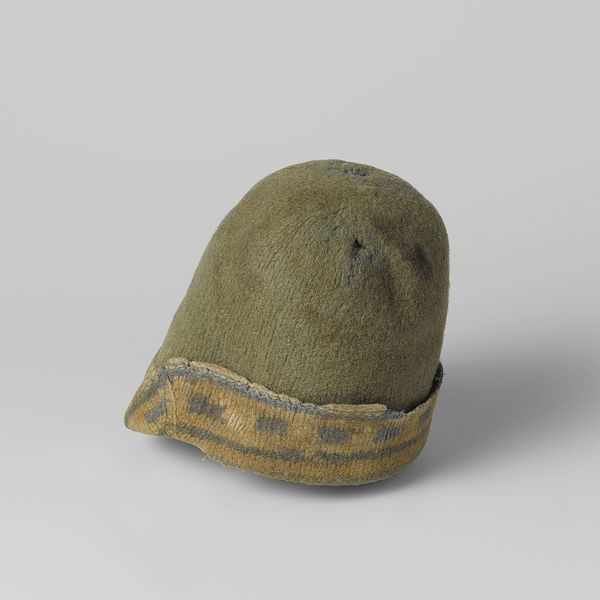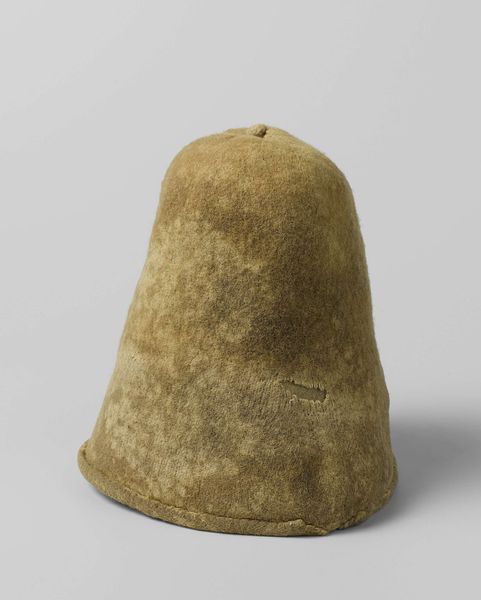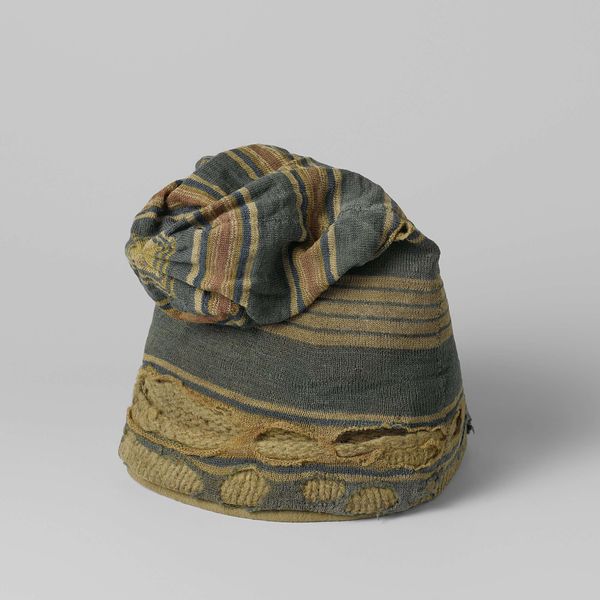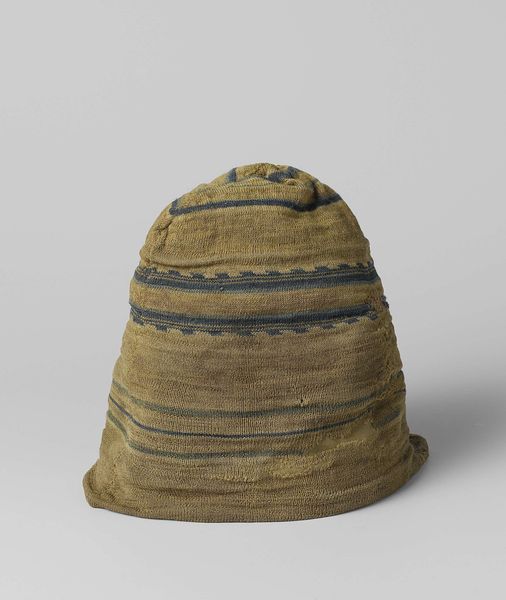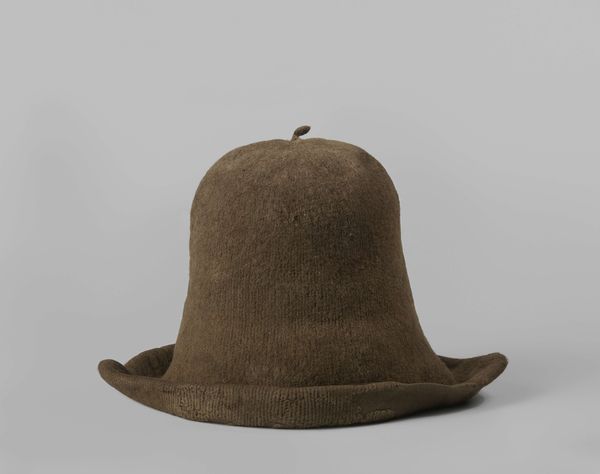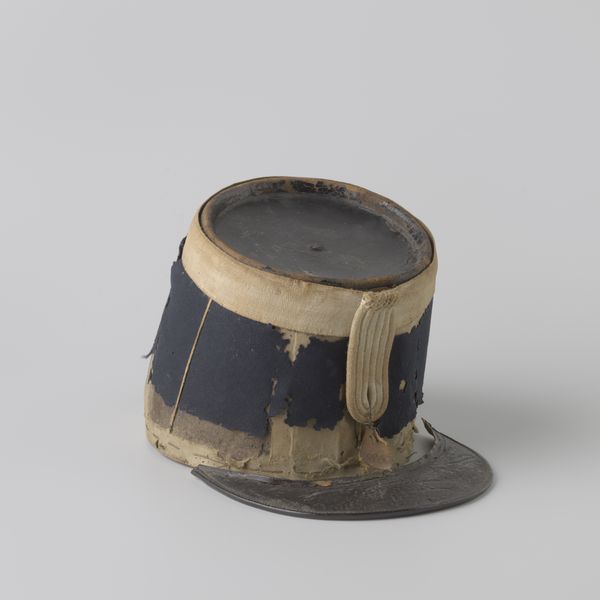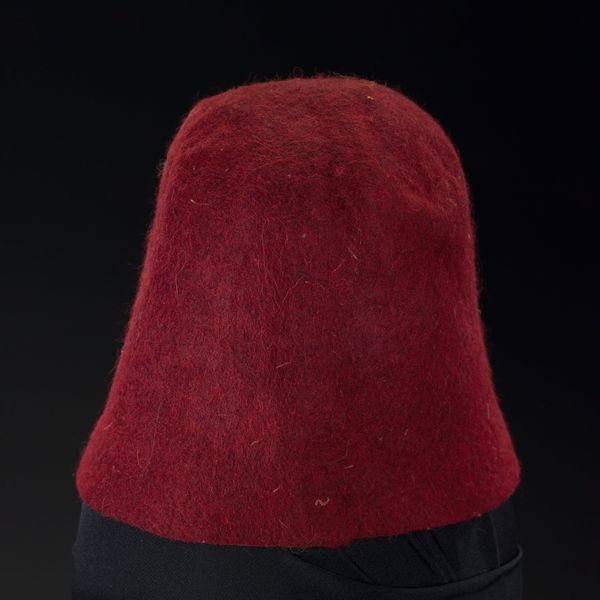
#
product shot
#
3d printed part
#
fashion mockup
#
product fashion photography
#
product design photgrpaphy
#
wearable design
#
metallic object render
#
product mock up
#
designed for kid
#
clothing photo
Dimensions: circumference 58 cm, height 23 cm
Copyright: Rijks Museum: Open Domain
Editor: So, this is a woolen cap, one of several "Woolen Caps Worn by Dutch Whalers" dating from 1650 to 1800. It’s…well, it’s a cap. It looks pretty worn, maybe a bit rough. How would you contextualize this object, beyond its apparent utilitarian function? Curator: That's the key, isn't it? These caps, seemingly simple, speak volumes about the socio-economic realities of 17th and 18th century Dutch whaling. Whaling was a huge industry, a dangerous profession. What does this cap tell us about the whaler’s life? Think about it - wool signifies warmth, crucial for arctic voyages. Its production and distribution connect to trade networks, class structures... Editor: So, it's less about the cap itself and more about what it represents in terms of labor and global commerce? Curator: Exactly. Consider the political implications! The Dutch Republic was a dominant maritime power. Whaling contributed significantly to its wealth and expansion. These caps silently participated in the theater of colonial ambition and exploitation. Even their design, replicated across presumably countless examples, signifies a standardization, a kind of maritime uniform within this workforce. Does the level of wear on this particular example spark any specific thoughts in your mind about its prior life? Editor: I guess seeing the wear and tear makes me think of the actual person who wore it, braving the cold and the danger... it makes the history feel a lot more real and immediate. It's not just about trade routes and colonial power, but also about the individual. Curator: Precisely. Art isn’t always painting and sculpture, sometimes it takes the form of a humble cap! By looking closely, we discover its story of economic and human drama. Editor: I’ll never look at a hat the same way again! Thanks!
Comments
rijksmuseum about 2 years ago
⋮
In 1980 archaeologists investigated the graves of 185 Dutchmen – whale hunters, and workers at whale oil refineries – who had died on or near Spitsbergen in the 17th century. Many skeletons were still wearing their knitted woollen head coverings. These caps were highly personal. The men were bundled up against the severe cold and could only be recognized by the colours and patterns of their caps. Presumably this is the reason why the caps went with them into their graves.
Join the conversation
Join millions of artists and users on Artera today and experience the ultimate creative platform.
